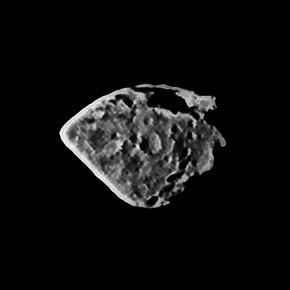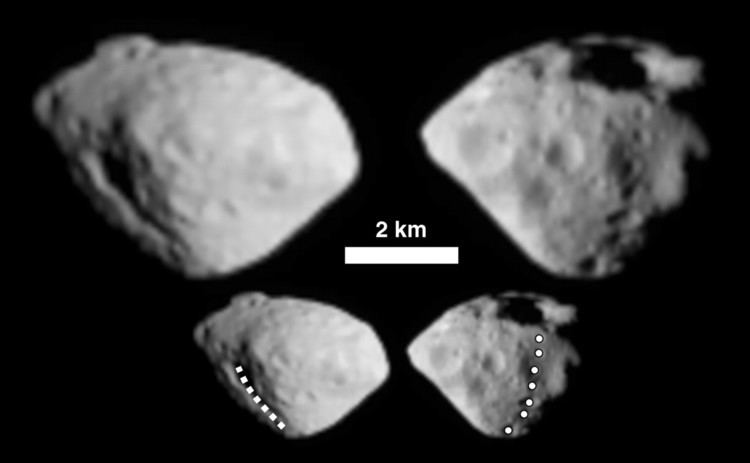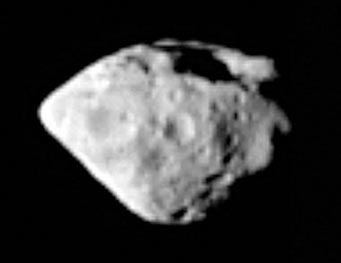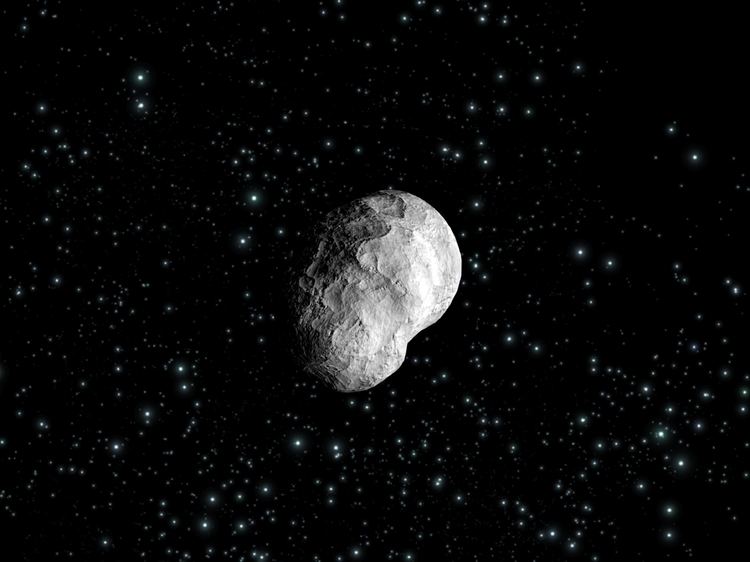Discovery date 4 November 1969 Minor planet category Main belt Aphelion 2.7074 AU (405.02 Gm) Orbits Sun Discoverer Nikolai Chernykh | Alternative names 1969VC Observation arc 64.29 yr (23481 days) Discovered 4 November 1969 Spectral type E-type asteroid Named after Kārlis Šteins | |
 | ||
Discovered by Nikolai Stepanovich Chernykh Discovery site Crimean Astrophysical Observatory Similar 21 Lutetia, Solar System, Sun, 5535 Annefrank, 253 Mathilde | ||
2867 Šteins is a small main-belt asteroid that was discovered in 1969 by Nikolai Chernykh. It is named after Kārlis Šteins, a Latvian and Soviet astronomer. Šteins was visited by the European Space Agency's Rosetta space probe in 2008.
Contents

Physical characteristics

A study published in 2006 by astronomers at the European Southern Observatory showed that Šteins is an E-type asteroid with a diameter of approximately 4.6 km. Studying the asteroid before its flyby, the ESA Rosetta space probe showed via a lightcurve analysis that Šteins has a rotation period of about six hours, is irregular in shape, and does not have any moons.

After the Rosetta flyby, the ESA described Šteins as 'a diamond in the sky', as it has a wide body that tapers into a point. The wide section is dominated by a large crater (2.1 km diameter), which surprised scientists, who were at first amazed the asteroid survived such an impact, while later it turned out that the ratio of crater diameter
Flyby

On September 5, 2008, the Rosetta space probe flew by Šteins at a distance of 800 km and a relatively slow speed of 8.6 km/s. Despite the short duration of this encounter (approximately 7 minutes in total), a great amount of data was obtained by the 15 scientific instruments operating on board the Rosetta spacecraft. This was the first of two planned asteroid flybys performed by the probe, the second being to the much larger 21 Lutetia in 2010. The timing of the fly-by meant that the asteroid was illuminated by the sun from the perspective of the spacecraft, making the transmitted images clear and concise. The European Space Operations Centre streamed a press conference on Šteins later that day.
Nomenclature
On May 11, 2012, the Working Group for Planetary System Nomenclature announced a naming system for geographical features on Šteins. Inspired by the asteroid's gem-like shape, its craters are given the English-language names of precious stones, with the largest being named Diamond. Except for the montes of Mercury and the lunar maria, the craters of Šteins are the only features in the solar system whose names are not derived from proper nouns. In addition, a distinct region on the asteroid has been named Chernykh Regio after the discoverer.
